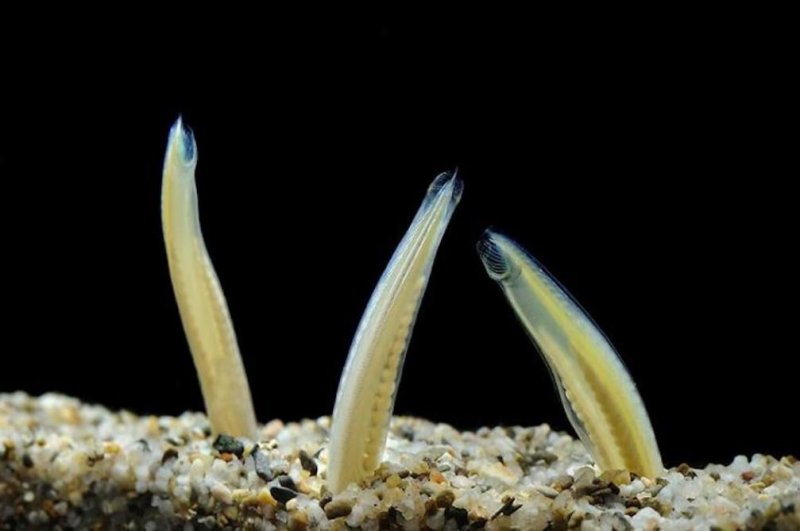Lancelets features a body structure similar to vertebrates, but they lack the gene regulatory abilities needed to develop anatomical specializations. Photo by Vincent Moncorgé
Nov. 21 (UPI) -- The research is clear, the physiological complexity that makes modern humans -- and other mammals -- unique from simpler species is a product of gene regulation, not genet quantity.
But when and how did vertebrates and mammals evolve the kinds of gene regulatory mechanisms that made human complexity possible?
New research -- published Wednesday in the journal Nature -- suggests lancelets, fish-like marine chordates, can provide an answer to the question.
"If you really want to understand what makes vertebrates, mammals, humans special, you need to have this basis to compare them, evolutionarily," Ferdinand Marlétaz, a geneticist at the Okinawa Institute of Science and Technology, said in a news release.
New genomic analysis suggests organisms that emerged just after the lancelets on the evolutionary timeline were able to amass duplicate copies of their entire genome. Subsequent vertebrates doubled their genome once more.
"The idea is that these two rounds of whole genome duplication promoted the evolution of so-called vertebrate novelties -- for example, the head and the limbs," said Marlétaz.
The development of new anatomical features was made possible new regulatory gene pathways, but until now, scientists were unable to make the link between genome duplication and gene regulation.
An analysis of the genomes of lancelets and zebrafish helped scientists forge the connection.
As the comparison revealed, the lancelet genome features the same number of genes as the zebrafish genome but is host to far fewer regulatory regions.
Researchers hypothesized that as vertebrates doubled their genome, some genes were lost in the process, clearing space for duplicates to develop new functions, paving the way for new physiological experiments -- the growth of new appendages.
The new analysis also showed lancelets use a form of gene regulation thought to be exclusive to vertebrates.
Vertebrate genomes feature chemical structures called methyl groups. The structure regulate the genes they're attached to. As vertebrates develop, they get rid of these structures, thus, altering how their genes are regulated.
While lancelets don't have many methyl groups, the new research found the marine organisms discard the structures as they develop -- a similar form of addition-by-subtraction as gene regulation.
Researchers think the latest revelations are a first step in beginning to untangle the genetic origins of vertebrate and mammal complexity.
"We need more of these types of studies to understand what the main differences are in terms of gene regulation in different animals," said Marlétaz. "Even now, we still know surprisingly little."















